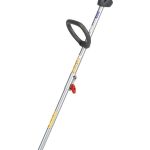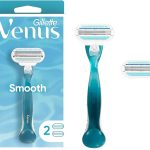As you’re rummaging through your junk drawer, you stumble upon a handful of dead batteries, coincidentally, on the same day you’ve been meaning to replace them with rechargeable ones. You’ve heard the environmental benefits and cost-effectiveness of making the switch, but with so many options available, it’s hard to know where to start. That’s why we’ve narrowed it down to the top 5 rechargeable batteries on the market. From high-capacity NiMH batteries to lithium rechargeables with built-in chargers, we’ll explore the best of the best – but first, let’s take a closer look at what sets these top performers apart.
Contents
- EBL Ni-MH AA Rechargeable Batteries
- TENAVOLTS 1.5V AA Lithium Rechargeable Battery with Charger
- Rechargeable AA NiMH Batteries, 2000 mAh, 8 Count
- Duracell Rechargeable AA Batteries
- Amazon Basics Rechargeable AA NiMH Batteries
- Factors to Consider When Choosing Rechargeable Batteries
- Frequently Asked Questions
- Conclusion
EBL Ni-MH AA Rechargeable Batteries
If you’re looking for high-capacity rechargeable batteries that can power your devices for an extended period, EBL’s Ni-MH AA Rechargeable Batteries are an excellent choice, offering a remarkable 2800mAh capacity and impressive low self-discharge rate.
You’ll appreciate that these batteries maintain 80% capacity after three years of non-use, making them perfect for devices you don’t use frequently.
They come partially precharged, so you can use them right out of the package, but it’s recommended to fully charge them for maximum performance.
With their high capacity and long lifespan, these batteries are ideal for powering devices like digital cameras, toys, and remote controls.
Best For: Those who need high-capacity rechargeable batteries for powering devices like digital cameras, toys, and remote controls.
Pros:
- High-capacity 2800mAh batteries with long lifespan
- Improved low self-discharge rate, maintaining 80% capacity after 3 years of non-use
- Cost-effective and eco-friendly, reducing waste and environmental impact
Cons:
- Plastic casing around the battery is cheaply made and prone to scratching and peeling off
- Requires full charging for maximum performance
- No additional features or innovations beyond standard rechargeable batteries
TENAVOLTS 1.5V AA Lithium Rechargeable Battery with Charger
Here is the DAVOLTS G1 Lithium Rechargeable Battery with a high power capacity of 2775 mWh,<|start_header_id|><|start_header_id|><|start_header_id|>
Making it an ideal choice for users who need reliable power for their high-drain devices.<|start_header_id|><|start_header_id|><|start_header_id|>
This means you can use it for devices like insulin pumps,<|start_header_id|><|start_header_id|><|start_header_id|>
toYS
Best For: Those who need reliable power for their high-drain devices such as insulin pumps, toys, and portable audio players.
Pros:
- High-power capacity of 2775 mWh for reliable power to high-drain devices
- Fast charging time of 1.8 hours and long lifespan of up to 1,000 recharge cycles
- Provides a constant voltage output of 1.5V from 100% to 0% electric capacity for consistent device performance
Cons:
- Some users have reported issues with the batteries not holding their charge after sitting for an extended period
- There have been reports of defects with the internal connection of some batteries
- The battery indicator on some devices may not accurately reflect the battery’s capacity, only voltage
Rechargeable AA NiMH Batteries, 2000 mAh, 8 Count
These rechargeable AA NiMH batteries,<|start_header_id|><|start_header_id|><|start_header_id|>assistantassistant capacity of 2000 mAh are an ideal choice for heavy users who need a reliable power source for their devices.<|start_header_id|><|start_header_id|>
Best For: Heavy users who need a reliable power source for their devices, such as flashlights, toys, or remote controls.
Pros:
- Long-lasting performance with a capacity of 2000 mAh
- Eco-friendly design with a slow self-discharge rate, making them suitable for storage
- Rechargeable, reducing waste and saving money in the long run
Cons:
- May require multiple recharges to reach full capacity
- Not suitable for devices requiring high-drain power
- May have a shorter lifespan if not stored properly
Duracell Rechargeable AA Batteries
When you need reliable power for your heavy-use devices
Duracell Rechargeable AA batteries are the best choice
Best For: Heavy-use device users who need reliable and long-lasting power for their devices.
Pros:
- Long-lasting charge with hundreds of charging cycles per battery
- Fast recharging times with the Ion Speed 1000 Battery Charger
- Environmentally friendly and cost-effective in the long run
Cons:
- Some customers experienced issues with the batteries not charging or working after a certain period
- Lifespan may vary depending on usage and charging habits
- May not be suitable for low-drain devices that don’t require frequent recharging
Amazon Basics Rechargeable AA NiMH Batteries
For those seeking reliable and long-lasting power for their devices, Amazon Basics Rechargeable AA NiMH Batteries stand out with their impressive 2000 mAh capacity and ability to retain 80% of it for up to two years.
You’ll get up to 1000 recharge cycles with minimal power loss, making them a cost-effective option in the long run.
These batteries are pre-charged and ready to use, with a shelf-life of up to 5 years.
They’re ideal for remote controls, flashlights, clocks, and more.
With consistent performance and minimal self-discharge, you can rely on them to power your devices efficiently.
Plus, they’re a great value for the price, saving you money compared to disposable batteries.
Best For: Those who need reliable and long-lasting power for their devices, especially for high-drain devices like cameras and everyday gadgets.
Pros:
- Long-lasting power with minimal power loss, making them a cost-effective option in the long run
- Reliable performance in high-drain devices and everyday gadgets
- Excellent value for money, with each battery capable of being recharged hundreds of times
Cons:
- Some customers experienced issues with leakage
- Made in China, which may be a concern for some customers
- Initial investment may be higher than disposable alternatives, although it is offset by long-term savings
Factors to Consider When Choosing Rechargeable Batteries
When selecting rechargeable batteries, you’ll want to deliberate several key factors to guarantee you’re getting the right ones for your needs.
You’ll need to ponder the type of battery you require, how long it’ll last, and how quickly it can be recharged.
Battery Type Options
Choosing the right rechargeable battery type depends on your specific needs and preferences, considering factors like capacity, cycle life, and self-discharge rate.
You’ll want to think about how you plan to use the batteries and what features matter most to you.
NiMH batteries are a popular choice, offering high capacity, long cycle life, and a relatively low self-discharge rate.
If you’re willing to spend a bit more, Li-ion batteries provide high energy density, long cycle life, and low self-discharge. However, they may have safety concerns and are more expensive.
Lead-Acid batteries are better suited for automotive and backup power systems due to their weight and low energy density.
Ni-Cd batteries are an older technology with lower capacity and shorter cycle life, but still have some niche uses.
If you’re looking for a more sustainable option, hybrid batteries like Ni-Zn and Zinc-Air are emerging technologies that offer improved performance.
Ultimately, you must carefully consider the pros and cons of each type to find the best fit for your needs.
Capacity and Lifespan
The ideal capacity and lifespan of rechargeable batteries depend on the specific application and usage patterns.
For general-purpose use, a capacity of 2000-2500mAh and a lifespan of 300-500 cycles are considered a good balance between performance and cost.
High-drain devices like power tools and e-bikes require higher capacities, typically ranging from 3000-5000mAh, and lifespans of 500-1000 cycles.
Low-drain devices like clocks and remote controls can get by with lower capacities (1000-2000mAh) and longer lifespans (1000-2000 cycles).
Nickel-cadmium (Ni-Cd) batteries, once popular, have largely been replaced by nickel-metal hydride (NiMH) and lithium-ion (Li-ion) batteries due to toxicity and environmental concerns.
NiMH batteries offer a good balance of capacity, lifespan, and cost, making them suitable for general-purpose use. They typically have capacities ranging from 2000-3000mAh and lifespans of 300-500 cycles.
Li-ion batteries boast high capacities (up to 5000mAh) and long lifespans (up to 1000 cycles), but are more expensive than NiMH batteries. They’re ideal for high-drain devices and applications where weight and size are critical.
Charging Speed and Ease
As you weigh your options for rechargeable batteries, you’ll want to think about how quickly you can get them back up and running, since charging speed and ease can make all the difference in keeping your devices powered.
When it comes to charging speed, you’ll want to look for batteries that can fully recharge in a short amount of time – ideally around 1.8 hours.
Some batteries, like those with 1200 Tech or ProCyco technology, are designed to maximize power performance while charging, making the process faster and more efficient.
The type of charger you use also plays a significant role in charging speed.
For example, the Ion Speed 1000 Battery Charger is capable of delivering lightning-fast charging times.
Additionally, consider the charging method – can the batteries only be recharged with an authorized charger, or are they more flexible?
Finally, keep in mind that higher capacity batteries (measured in mAh) may take longer to fully charge, so factor that into your decision.
Compatibility and Versatility
When considering the versatility of rechargeable batteries, you want to think about the devices you’ll be using them with. Do you need batteries that can power everything from your kid’s toys to your wireless headphones? Look for batteries that come in a range of sizes, such as AA, AAA, and 9V. This will give you the flexibility to use them in different devices.
You should also consider the type of devices you’ll be using the batteries with. If you have a lot of high-drain devices like flashlights or gaming controllers, you’ll want batteries with a high capacity (measured in mAh) to guarantee they last a long time. On the other hand, if you’re using them in low-drain devices like clocks or remote controls, a lower capacity will suffice.
Another important factor is the battery’s chemistry. Nickel-metal hydride (NiMH) batteries are a good all-around choice, but lithium-ion (Li-ion) batteries may be better suited for high-drain devices. By considering these factors, you can choose rechargeable batteries that are compatible with your devices and provide the performance you need.
Environmental Impact
**Disposable batteries have a significant environmental impact because they contain toxic materials like lead, mercury, and cadmium that can contaminate soil and water if not disposed of properly.
Rechargeable batteries are made from environmentally friendly materials like nickel-hydride (NiMH) or lithium-ion (Li-ionand can be used multiple times
Frequently Asked Questions
Can I Use Rechargeable Batteries in Any Device?
You wonder if you can use rechargeable batteries in any device, and the answer is, you can use them in most devices, but always check the manufacturer’s recommendations to guarantee compatibility and peak performance.
How Do I Properly Store Rechargeable Batteries?
When storing rechargeable batteries, you’ll want to keep them away from metal objects and extreme temperatures. Store them in a cool, dry place, and avoid mixing them with non-rechargeable batteries to prevent damage.
Can I Charge Rechargeable Batteries Too Many Times?
You’ll be surprised to know that rechargeable batteries can save around 1,200 single-use batteries per year! Can you overcharge them? Thankfully, no, most modern rechargeable batteries have built-in protection against overcharging, so you don’t have to worry about it.
Are Rechargeable Batteries More Expensive Upfront?
You’ll likely pay more upfront for rechargeable batteries, but they’ll save you money in the long run since you won’t need to constantly buy new ones.
Can I Mix Old and New Rechargeable Batteries?
You can mix old and new rechargeable batteries,<|start_header_id|><|start_header_id|>assistant
Conclusion
Rechargeable batteries are like a good friend – they’ve got your back (and your devices) for the long haul.










